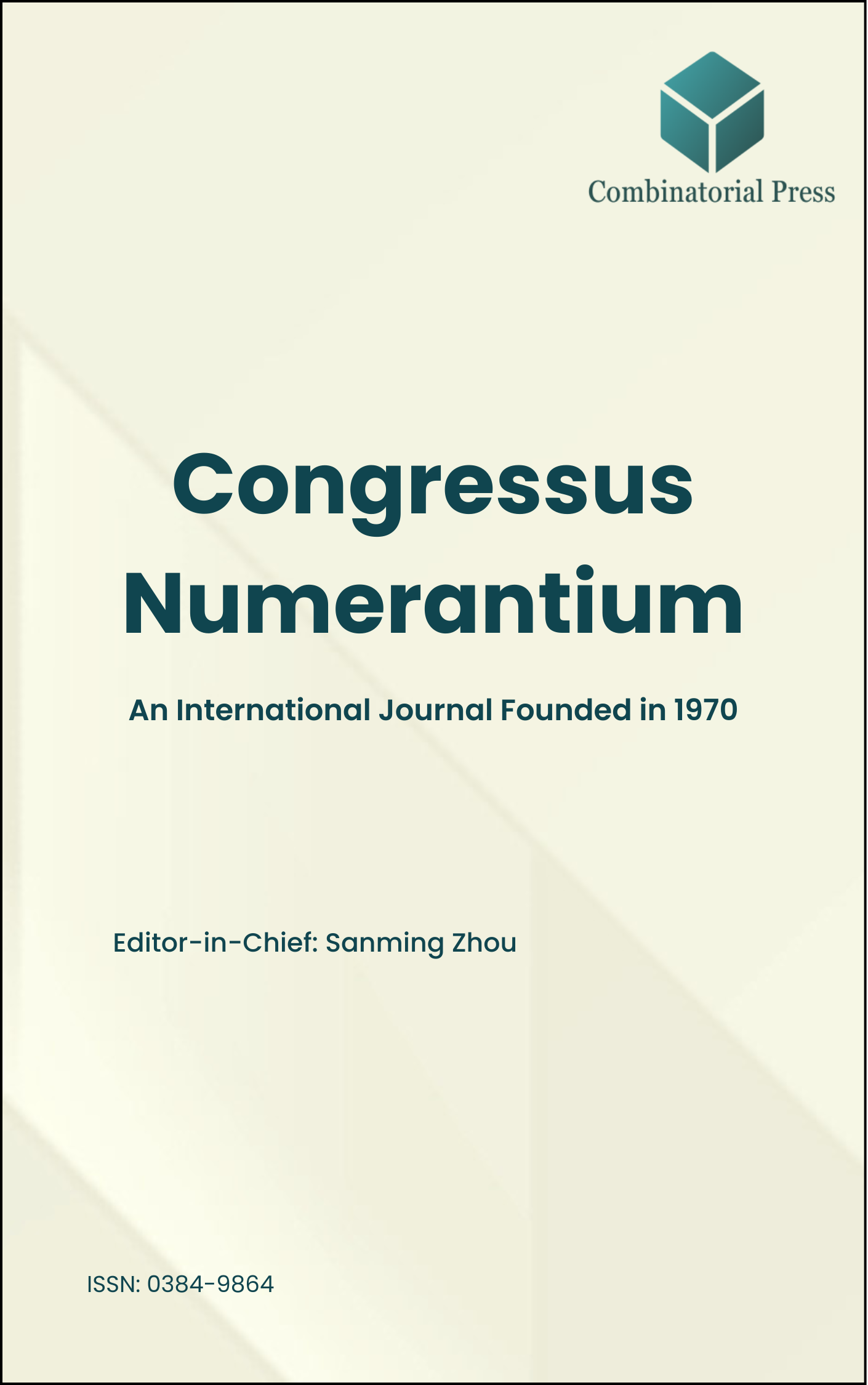
Congressus Numerantium
ISSN: 0384-9864
Established in 1970, Congressus Numerantium is one of the oldest international journals with a focus on publishing high-quality papers in combinatorics and related areas. Over the years, it has published numerous fully refereed regular papers and conference proceedings for many prestigious conferences. However, publication was temporarily paused on January 15, 2020. Throughout its active years, Congressus Numerantium adopted a print format, following a subscription-based model for readers and releasing 234 Volumes. Despite the changing landscape of academic publishing, Congressus Numerantium demonstrated resilience. In 2024, the journal embarked on a transformative journey, reemerging in both print and online formats with the objective of publishing 2 volumes annually, scheduled for release in June and December. We cordially invite original research papers and survey articles, welcoming significant contributions to both the pure and applied aspects of combinatorics. Furthermore, we extend a warm invitation for special issues dedicated to conferences and workshops in combinatorics and related fields, carrying forward the rich tradition of this esteemed journal. Special issues on selected topics of current interest to the community of combinatorics are also welcome.
- Research article
- Full Text
- Congressus Numerantium
- Volume 232
- Pages: 201-208
- Published: 31/12/2019
Distinctive power of the alliance polynomial has been studied in previous works. For instance, it has been proved that the empty, path, cycle, complete, complete without one edge, and star graphs are characterized by its alliance polynomial. Moreover, it has been proved that the family of alliance polynomials of regular graphs with small degree is a very
special one, since it does not contain alliance polynomials of graphs other than regular graphs with the same degree. In this work, we prove that the alliance polynomial also
determines the wheel graphs.
- Research article
- Full Text
- Congressus Numerantium
- Volume 232
- Pages: 209-220
- Published: 31/12/2019
An ordered tree, also known as a plane tree or a planar tree, is defined recursively as having a root and an ordered set of subtrees. A
In this paper, we show that the number of
- Research article
- Full Text
- Congressus Numerantium
- Volume 232
- Pages: 189-200
- Published: 31/12/2019
A split graph is a graph whose vertices can be partitioned into a clique and an independent set. Most results in spectral graph theory do not address multigraph concerns. Exceptions are [2] and [4], but these papers present results involving a special class of underlying split graphs, threshold graphs, in which all pairs of nodes exhibit neighborhood nesting, and all multiple edges are confined to the clique.
We present formulas for the eigenvalues of some infinite families of regular split multigraphs in which all multiple edges occur between the clique nodes and cone nodes, with multiplicity of multiple edges
- Research article
- Full Text
- Congressus Numerantium
- Volume 232
- Pages: 165-188
- Published: 31/12/2019
A rigid vertex is a vertex with a prescribed cyclic order of its incident edges. An embedding of a rigid vertex graph preserves such a cyclic order in the surface at every vertex. A cellular embedding of a graph has the complementary regions homeomorphic to open disks.
The genus range of a
- Research article
- Full Text
- Congressus Numerantium
- Volume 232
- Pages: 153-164
- Published: 31/12/2019
The hypercube cut number
The identity
We present a short proof for the result presented by Emamy-Uribe-Tomassini in Hypercube 2002 based on Tomassini’s Thesis. The proof here is substantially shorter than the original proof of 60 pages.
- Research article
- Full Text
- Congressus Numerantium
- Volume 232
- Pages: 137-152
- Published: 31/12/2019
Percolation models are infinite random graph models which have applications to phase transitions and critical phenomena. In the site percolation model, each vertex in an infinite graph
There are few lattice graphs for which the site percolation threshold is exactly known, and rigorous bounds for unsolved lattices are very imprecise. The substitution method for computing bounds for the more common class of bond percolation models must be modified to apply to site models. Some modifications will be illustrated with an application to the
- Research article
- Full Text
- Congressus Numerantium
- Volume 232
- Pages: 119-136
- Published: 31/12/2019
In a finite projective plane
1. Every line intersects it in at most
2. There exists a line which intersects it in exactly
We are interested in determining, for each
- Research article
- Full Text
- Congressus Numerantium
- Volume 232
- Pages: 113-118
- Published: 31/12/2019
A cyclic triple,
- Research article
- Full Text
- Congressus Numerantium
- Volume 232
- Pages: 101-112
- Published: 31/12/2019
The study of the generalized Fermat variety
defined over a finite field
- Research article
- Full Text
- Congressus Numerantium
- Volume 232
- Pages: 67-100
- Published: 31/12/2019
For
(i)
(ii)
(iii)
Then
In general, for
For these
(i) The number of occurrences of each symbol
(ii) The number of times each symbol
(iii) The number of levels, rises, and descents within the strings;
(iv) The number of runs that occur within the strings;
(v) The sum of all strings considered as base
(vi) The number of inversions and coinversions within the strings; and
(vii) The sum of the major indices for the strings.





